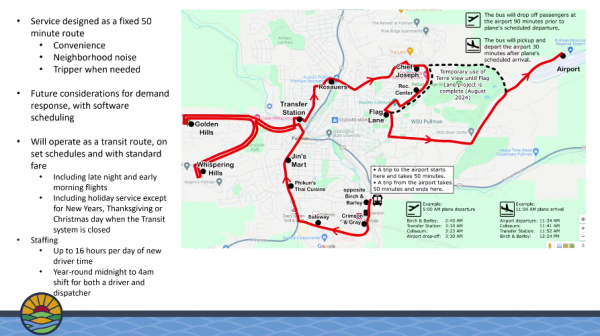Volunteers install ramps
Disability Action Center uses grant to fund wheelchair ramps
October 19, 2017
Residents were given a chance to have more accessible homes, as well as a more convenient way to the outside world, with free ramp installments throughout the community.
The Disability Action Center NW received a $17,500 grant from the Christopher and Dana Reeve Foundation last year. Vicki Leeper, DAC marketing specialist, explained that the grant provided the funds to pay for expenses in building ramps to help the community become more accessible.
Leeper said that the free ramp installments helped people, especially senior citizens, to have the ability to live in their homes. She explained that the ramps helped citizens become more mobile, eliminating the need for assistance at a nursing home.
“People that would be stuck in that nursing home can come back into their home”, she said. “We want people to be as independent as possible.”
She mentioned that if one has Medicare then they have to pay for a ramp themselves, which can be expensive. A ramp is subsidized under Medicaid, but it can be a long process to get it, Leeper said. She explained that the DAC ramps are built by volunteers within hours.
“One of the purposes for the ramp is that they’re fast until you can get a more permanent solution,” she said.
Leeper said that the ramps are used for other functions as well, including reunions or events that are held in places that lack accessibility.
“We did one in a church in Moscow. The church wasn’t accessible, so they had it for about four or five days and then it was picked back up again.”
She emphasized that anyone in need of a ramp is eligible for the DAC service.
“You don’t have to meet some poverty level in order to get one,” Leeper said.
She noted that volunteers were a big factor to the free ramp installments that gave accessibility to the community. Leeper said that the partnerships with the Habitat for Humanity and Lion’s Club organizations enabled more volunteers to help set up the ramp installments.
Ten year Habitat for Humanity volunteer, Brent Bradberry, worked with DAC to install the free ramps. He explained that the training to install the ramps was very manageable.
“It doesn’t take a great deal of time,” he said. “For most situations it only takes a couple hours to build a ramp and put them together.”
Bradberry said that the ramp installments are in greater demand than most people realize. He noted that his actions made lives easier for the recipients of the ramps. He spoke about a specific recipient that gave him the impression that she was trapped in her house.
“Now that the ramp is there, her caregiver can take her out in her wheelchair whenever she needs to go,” he said.
Leeper explained that the ramps are not permanent, but can be kept for as long as needed. She said that looking toward the future, the ramps will be updated to make them more efficient during seasonal changes.
“We found a new ramp system,” Leeper said. “It has holes in it so the snow goes through and ice doesn’t build up.”




















